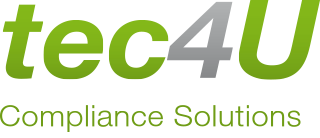On 30 July 2025, the European Commission issued an official recommendation for voluntary reporting (non-listed) SMEs to use the VSME standard as a guide for sustainability reporting.
What is special about this reporting standard?
- The VSME standard is not as comprehensive as the ESRS Set1, but covers the most important KPIs and sustainability topics.
- The modular structure of this reporting standard – consisting of a basic and an extended module – gives companies considerable flexibility in shaping the content of their reports.
- In addition, the company can focus on the areas that are actually relevant in its sustainability report.
For which companies is the VSME standard relevant?
This framework is particularly suitable for companies with fewer than 250 employees that want to meet the data requirements of banks, investors and major customers.
What are the particular benefits for SMEs that report voluntarily in accordance with VSME?
- Easier access to finance (through increased transparency in the ESG area)
- Significant internal benefits for effective risk management
- Reporting standards developed in the future for other groups of companies that become subject to reporting requirements should be based on the VSME standard.
How can the VSME standard be applied?
Before you start collecting data and actually reporting, there are a few key preparations to make. First, you need to determine which topics will be reported on and which KPIs are necessary for this. A project like this can be structured as follows:
- Creation of a “long list”: Compile all potentially relevant sustainability aspects from the VSME standard. A distinction should always be made between requirements from the basic module and the comprehensive module.
- Conducting a “reduced” materiality analysis in accordance with CSRD: Even though a materiality analysis is not specifically required in the VSME, it is recommended as a key tool for checking all reporting requirements for relevance.
- Creation of a short list: Reduction of the long list of sustainability topics from the VSME to the topics that are actually relevant and will be included in the sustainability report.
- Compiling all relevant data points and additional information on the material topics.
- Conducting a GAP analysis: Comparing the material data points with the existing data in the company. In particular, where information is missing, the next step is to assign responsibilities and define processes and methods for data collection.
(Source: Excerpt from customer project tec4U)
In our view, the VSME standard represents a pragmatic and proportionate framework for sustainability reporting by small and medium-sized enterprises.
If you have any further questions about the content or specific implementation of the VSME standard, please do not hesitate to contact us.
Your contact:
Gülistan Dar. EMail: g.dar@tec4U-solutions.com, Phone: +49 681/92564-0
